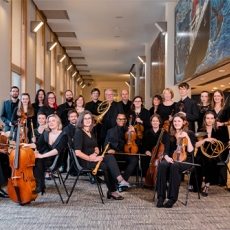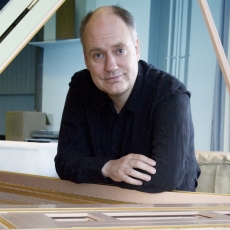Dunedin Consort - J.S. Bach: Violin Concertos - Fanfare
Violinists Cecilia Bernardini and Huw Daniel, conductor John Butt, and the Dunedin Consort open their program of Bach's concertos for violin with the Concerto for Violin and Oboe in C Minor. In the first movement, Bernardini and oboist Alfredo Bernardini emerge from a particularly silken ensemble sonority-but they don't protrude too far. The performance remains collegial and chamber-like in sound in all three movements, producing an elegant slow movement and a sprightly finale with nary a texture out of place. They give a joyous performance of the first movement of the Violin Concerto in E Major, with Bernardini flashing like quicksilver in the bariolage passagework, her 1713 Camillus Camilli sounding as bright there as it did ingratiatingly smooth in the previous concerto. She and the ensemble hardly linger in the in slow movement and adopt a quick tempo in the finale, realizing much of the movement's potential for gaiety. Their program departs from that of the usual collection of the canonical three concertos for violin and the nearly canonical Double Concerto for Violin and Oboe by including the brief Sinfonia from the cantata Ich hatte viel Bekümmernis-as rich as a concerto in interplay between the oboe and violin, and they invest it with a gravitas and create a mesmeric effect that together justify its conclusion. The first movement of the Violin Concerto in A Minor shares the joie de vivre of their performance of the E-Major Concerto; and their reading of the slow movement, similar to that of the other concerto, gives an impression of profundity free from the least suggestion self-consciousness or mannerism. The ensemble opens the finale with a buoyant skittishness that also infects Bernardini. In the two solo concertos, as in the Double Concerto that opened the program, the solos seem to emerge from the ensemble rather than to ride above it, as early readings by, say, Isaac Stern, used to do (in everything else, so why not in Bach as well, he might have thought?).
Huw Daniel (playing an Alessandro Mezzadri violin from about 1720) joins Bernardini in the Concerto for Two Violins. When Jascha Heifetz recorded the concerto with himself (he later chose his student Erick Friedman as a partner), there could be no question of distinguishing the approaches of the two soloists. Nevertheless, Anne Akiko Meyers also played the work's Largo with herself (Eone 7785, which I reviewed in Fanfare 35:6) but employed two violins, and the resulting differentiation served as both an auditory puzzle and an elevated entertainment. Bernardini's and Daniel's seamless partnership might remind listeners more of Heifetz with Heifetz, with the seamlessness offering a different kind of pleasure and an even greater associated puzzle: Can you-or anyone else-tell at any moment who's on top? Their finely spun texture doesn't fray even in the slow movement-and certainly not in the finale-to betray the soloists' identities. Vice or virtue? Those who consider it a vice may look to less smoothly ironed performances and those who consider it a virtue need look no farther than Bernardini and Daniel-except perhaps to Heifetz and Heifetz. Recommended heartily to the second kind of listeners.



